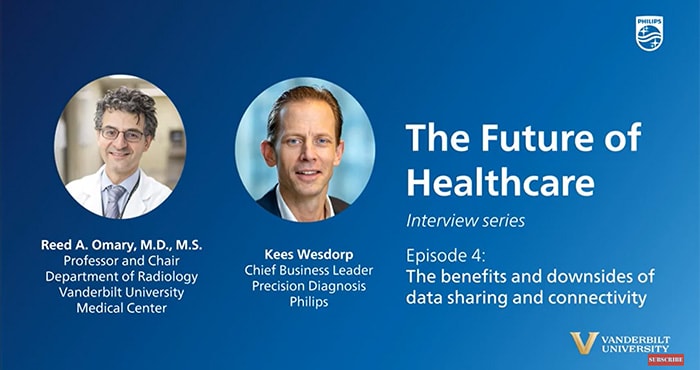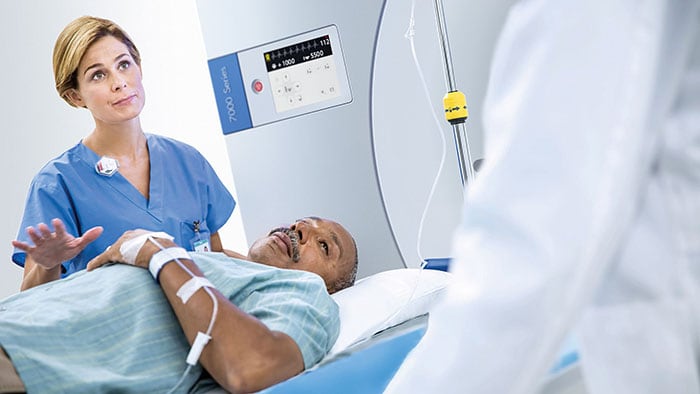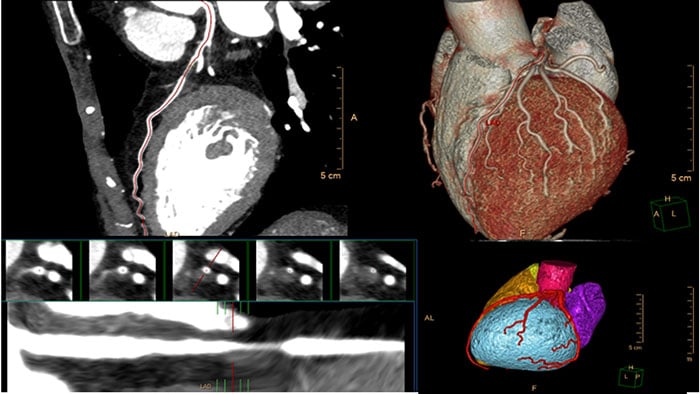The healthcare industry is undergoing a monumental transformation as care providers increasingly work to connect with patients outside of a hospital’s four walls to enable more care and healing to happen at home.
Efforts to extend the reach of patient care through connected technology means empowering care providers to understand a patient’s well-being in real-time to help those same providers to make confident decisions about an appropriate care setting for a patient.
Virtual support, digital tools, and software enable us to dematerialize operations, delivering advanced value with minimum resources. With the potential to drive a shift from resource-intensive clinical facilities to lower-cost community settings and into the home environment, these resources may be able to offer greater access to quality care to more people.
Listen as Kees Wesdorp, Chief Business Leader, Philips Precision Diagnosis and Dr. Reed Omary, Chair of Radiology at Vanderbilt University Medical Center continue their conversation about the future of healthcare. And stay tuned for the final installment coming soon.
Tools, software, and services that are designed to enable virtual care are gaining popularity and adoption, allowing remote interaction between patients and care providers and helping to eliminate the need for related travel and its associated C02 emissions. Rather than the hospital serving as the hub of all care, hospitals are fast becoming centers of excellence for specialized care or highly advanced conditions, turning to ‘hospital-at-home’ model of care for other traditionally in-person services.
Dr. Reed Omary
Chair of Radiology, Vanderbilt University Medical Center
In this model, telehealth becomes the patient’s first point of access for urgent care, offering remote consultations with a specialist, self-care education, chronic care management, and more. In addition to the responsible and sustainable use of energy and materials, its crucial to further optimize care pathways to help reduce the environmental impact of treatment.
To deliver this care, leaders continue to invest in enabling technologies. These enablers include digital health records, telehealth and artificial intelligence (AI) tools that can enhance efficiency, improve care and connect remote communities.
Kees Wesdorp
Chief Business Leader, Philips Precision Diagnosis
This was reflected in the Future Health Index 2022 report, with innovative care offerings rounding out the top priorities and investment plans among informatics healthcare leaders. Of those surveyed, almost a third (32%) reported facilitating a shift to remote care as a priority, while a quarter (25%) reported extending care beyond their hospital’s walls as a priority. The survey also revealed they regard artificial intelligence (AI) as key to achieving these objectives, with over two-thirds (69%) saying they were currently investing in AI technology.
Health technology companies cannot make the necessary changes in isolation. By partnering with care providers, practitioners, health systems, suppliers and other knowledgeable entities, we can combine sustainable practices with safe, efficient and effective methods of care to deliver better outcomes, lower costs and help improve patient and staff experiences. The time is now to take the next step towards a healthier tomorrow.

















